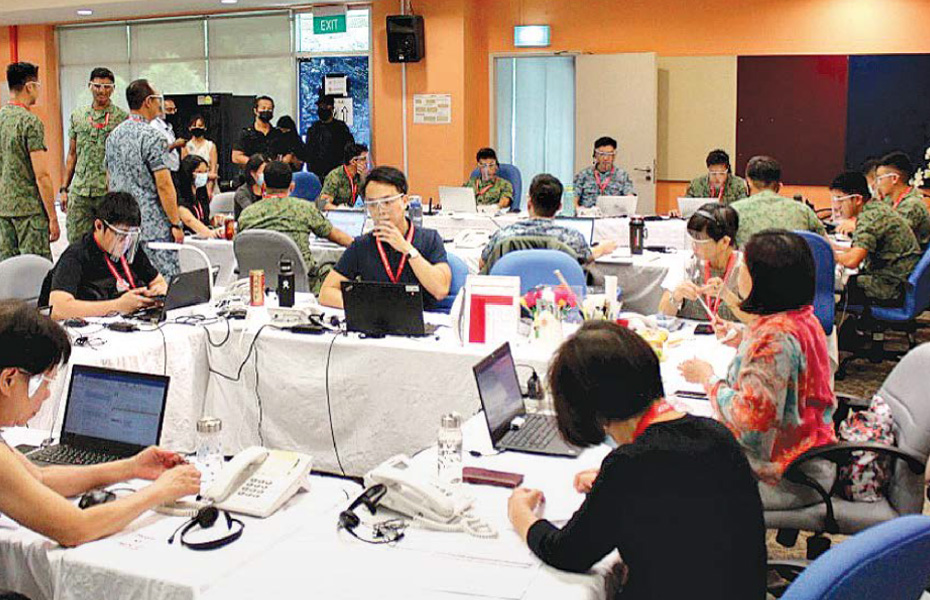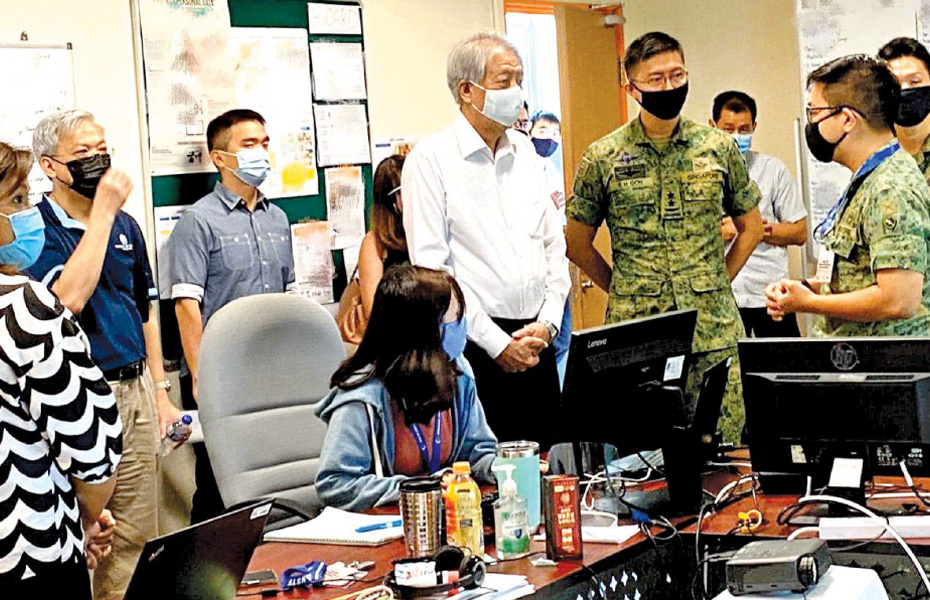Fighting the virus was a huge task. HSTF had to work with many agencies, each responsible for a different process. For instance, ICA led the Stay-Home Notice enforcement tasks, MOH managed contact tracing, and the National Centre for Infectious Diseases (NCID) oversaw activity mapping. These agencies had clear responsibilities and dedicated capacities, but they faced challenges when they had to integrate their work with one another.

Contact Tracing Centre operated by a mix of SAF and MOH personnel in Mandai Hill Camp.
Source: MINDEF
The lack of a centralised body to coordinate activity mapping and contact tracing was hampering the output. There were many instances of activity maps being lost or not picked up by the contact tracing centres. The contact tracers were spending too much time extracting details from activity maps that came from different sources and trying to piece them together. There were problems because of legacy issues and a lack of clarity over roles. But the crisis situation with the very high operational demands meant that no one had breathing space, let alone time, to take a step back to find solutions.
BG Lee saw a need to tighten the processes. He decided to set up a Centralised Activity Mapping Centre within HSTF that could do activity mapping directly from Mandai Hill Camp and still pull activity maps from NCID. With this, HSTF could independently run contact tracing operations from Mandai Hill Camp.
It was clear to HSTF that its role was to support other government agencies which would remain principally responsible for the outcomes of the various lines of operations. This would allow HSTF to concentrate on executing its mission well, tapping on the organising abilities and operational expertise of the SAF, while avoiding turf issues. BG Lee knew that establishing the working relationships with other agencies in the early phase of the operations would be challenging.

Senior Minister and Coordinating Minister for National Security Mr Teo Chee Hean visiting the Combined Analysis & Coordination HQ of the HSTF at Mandai Hill Camp.
Source: MINDEF
Initially, there were some challenges working with other agencies. There were already many established processes and inter-agency boundaries to follow, and these were there for good reason. But the situation had changed, so we had to go in with fresh eyes and no baggage, and try to be objective about what was needed to get the job done. At the same time, we were mindful that the SAF was there only to help out during the crisis; we would not be doing this forever.
So I reminded our people to set aside any perceived cultural differences and be constructive and forward-looking as a team. The onus was on us to convince them that what we were suggesting would improve the processes and outcomes given the present circumstances. And we should lean forward more to support the other agencies which were already very stretched.
BG Lee Yi-Jin
Commander HSTF
To be fair, dealing with the unknowns of the novel COVID-19 was not easy for everyone. There were times when both MOH and HSTF were equally puzzled, grappling with new discoveries about the virus and the corresponding changes in national policies. The many twists and turns made the contingency measures appear reactionary. HSTF soon realised that to get ahead of the virus, the modus operandi of all the government agencies in our WoG approach had to be fundamentally reviewed so that we could anticipate rather than merely react. Working hand in hand with the other agencies, HSTF invested precious time and manpower into building anticipatory planning and functioning capabilities. Such capabilities allowed proper contingency planning so that there would not be knee-jerk reactions, and decisions could be made after careful consideration of potential blind spots and pitfalls.